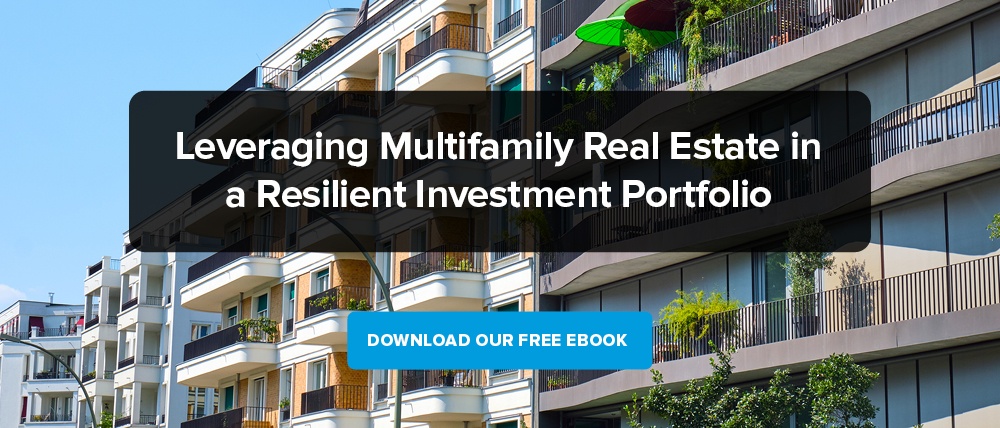If the last few months have taught us anything, it’s that anything can happen at any time...up to and including a worldwide pandemic.
While the stock market immediately jumps to mind for most when “investing” is brought up around the coffee machine, graphs like this one should be enough of a cautionary tale to scare anyone into thinking outside the box a little. That roller coaster would definitely have a height requirement.
Though it may seem somewhat counter-intuitive, multifamily real estate and stocks are considered uncorrelated assets, which means the violent change in the market does not necessarily affect the performance of real estate investments.
I’ll spare you the “eggs in one basket” analogy, but let’s take some time to explore why multifamily real estate investing is not just a prudent choice in the age of COVID-19, but a solid strategy when diversifying any portfolio meant for long-term gains.
Qualified Opportunity Zones
The 2017 Tax Cuts and Jobs Act made several sweeping changes to personal income tax filers, but wrapped up inside was an attempt by the federal government to “stimulate economic development and job creation” by creating Opportunity Zones throughout the country.
According to the U.S. Economic Development Administration, an Opportunity Zone is “an economically-distressed community where private investments, under certain conditions, may be eligible for capital gain tax incentives.” More specifically, investing in multifamily real estate in one of these qualified zones can allow you to defer tax payments on income received even from prior investments, as long as those gains are poured back into a Qualified Opportunity Fund (a vehicle designed to invest in Opportunity Zones) within 180 days after the sale. The taxes still need to be paid when the property is sold, or when the benefits expire on December 31st, 2026, whichever comes first.
However, if an investor holds onto the property for 5 years or longer, they can trim 10% from the deferred gain, 15% for 7 years, and after 10 years you are free from federal taxes on appreciation at the date of the sale.
It’s easy to get caught up in the many benefits you might be able to take advantage of yourself, but you may find the prospect of creating affordable multifamily housing in an area of the country hit hard by Coronavirus an even more valuable asset, even if it doesn’t show up on the stat sheet.
1031 Exchanges
Even if you don’t invest in a Qualified Opportunity Zone, 1031 exchanges offer a chance to reinvest your gains while keeping them well out of the IRS’s reach.
Essentially, when the time comes to sell one property, a 1031 exchange allows you to reinvest those funds back into another property without paying tax on the proceeds from the sale. The new property must be of “like-kind” and of equal or greater value than the previous property.
It’s important to remember that “like-kind” doesn’t necessarily mean the exact same type of property. If you were to sell a retail property, you could invest those funds into a multifamily property and still take advantage of the 1031 exchange since they are both investment properties.
Depreciation
Nobody likes to hear the word “depreciation” while discussing their investments, but it could be music to your ears come tax season, especially when investing in multifamily real estate.
A rental property depreciates over 27.5 years, which is essentially the amount of time the IRS considers your property to be “useful.” That means you can essentially write off about 3.63% of your property’s value every year for 27.5 years. It’s important to remember the land is a separate issue and not included in your building’s depreciation. If you just shelled out $1 million to invest in a multifamily property, you could be looking at a $36,000+ tax break. And that doesn’t include mortgage insurance, property repairs, professional services, travel to and from your property, and so on.
Passive Income
I bet it’s safe to assume this one does not need explaining. But maybe there’s an element you haven’t considered.
Once your multifamily investments are full of tenants, income arrives each month. In times of plenty, it’s easy to picture using those free moments to travel or indulge in other worldly wonders. But in times like these, a revenue stream that allows you the time to tend to family, or your own physical health without losing critical funds is more valuable than ever. You may even find yourself in a position to offer relief to one of your tenants who has been hit with job loss or any one of the other grievous tolls that Coronavirus has wrought upon the world.
Conclusion
As the world continues to live in the shadow of COVID-19, multifamily real estate investing continues to present solid investment options and offers the chance to pay it forward for others who are less fortunate.




